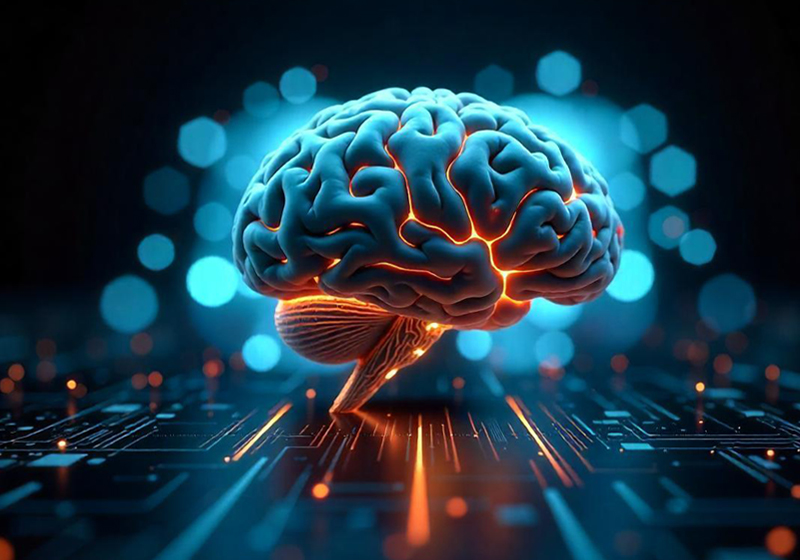The Rise of Artificial Intelligence: A Comprehensive Guide to Al Technology Investments
- By Donald Brin

In recent years, artificial intelligence (Al) has emerged as a transformative force, revolutionizing industries and changing our daily lives. From self-driving cars to intelligent automation, Al is no longer a futuristic concept but an integral part of our present. In this article, we will delve into the exciting world of Al technology investments, exploring its history, current applications, ethical implications, and the potential future developments that investors should keep an eye on.
The Evolution of Al
The concept of artificial intelligence has captivated humans for decades. One of the earliest known uses of the term Al was in a 1955 research proposal written by John McCarthy, widely regarded as the father of Al. In this proposal, McCarthy defined Al as "the science and engineering of making intelligent machines, especially intelligent computer programs." This marked the beginning of an exciting journey to create machines that could think and learn like humans.
Over the years, Al research and development progressed through various phases, from early rule-based systems and expert systems to more advanced machine learning and deep learning techniques.
The history of Al can be broadly categorized into generations, each characterized by significant advancements and milestones:
- First Generation Al (1956-1966): Also known as the era of symbolic Al, this period focused on creating rule-based systems that could solve specific tasks, such as playing checkers or proving mathematical theorems.
- Second Generation Al (1967-1976): This era witnessed the development of problem-solving methods and expert systems that could mimic human decision-making abilities in specific domains, like MYCIN, a pioneering expert system for medical diagnosis.
- Third Generation Al (1980s-1990s): With the rise of connectionism and neural networks, this generation aimed to emulate the structure and functionality of the human brain, leading to advancements in pattern recognition and natural language processing.
- Fourth Generation Al (1990s-Present): Marked by the boom of big data and computational power, this generation harnessed machine learning algorithms to detect patterns and make predictions, with applications in various fields, including image recognition and speech recognition.
- Fifth Generation Al (Present and Beyond): This current era is characterized by the integration of Al into every aspect of our lives, with a focus on creating autonomous systems that can exhibit human-like capabilities, such as self-driving cars and intelligent personal assistants.
Al in Our Daily Lives
Artificial intelligence is pervasive, and its impact can be felt across numerous industries and everyday scenarios:
- Smart Homes and loT: Al powers smart home devices, allowing us to control lighting, temperature, and security systems with voice commands or through mobile apps. It enables connected devices in the Internet of Things (loT) to learn our habits and preferences, providing convenience and automation.
- Healthcare: Al is revolutionizing healthcare through accurate diagnosis and treatment planning, drug discovery, and personalized medicine. It aids in identifying potential health risks, analyzing medical images, and improving patient outcomes.
- Finance and Investments: Al algorithms drive automated investing, robo- advisory services, and fraud detection systems. They analyze vast datasets to identify patterns, predict market trends, and make data-driven investment decisions.
- Transportation: Self-driving cars and autonomous vehicles utilize Al to perceive their surroundings, make real-time decisions, and ensure safe transportation. Al also optimizes traffic flow and improves road safety.
- Retail and E-commerce: Al-powered recommendations and personalized shopping experiences enhance customer satisfaction. Al-driven inventory management and supply chain optimization improve efficiency and reduce costs.
These are just a few examples, as Al continues to permeate and enhance numerous other sectors, including education, manufacturing, agriculture, and more.
- Technical Prowess: Assess the strength of the Al technology itself. Evaluate the team's expertise, the uniqueness of their approach, and the scalability and adaptability of their solutions.
- Data Advantage: Understand the data sources and strategies employed by the startup. Data is the fuel for Al, and a competitive advantage can be gained through access to unique or extensive datasets.
- Real-World Applications: Look for Al solutions that address genuine problems and have a clear path to market adoption. Assess the potential impact on businesses, consumers, or society at large.
- Ethical and Legal Considerations: Consider the ethical implications of the Al technology, including privacy, bias, and transparency. Ensure the startup adheres to regulatory requirements and ethical guidelines.
- Partnerships and Collaborations: Evaluate the startup's industry connections and strategic alliances. Strong partnerships can enhance their credibility and facilitate market penetration.
Evaluating Al Startups and Investment Opportunities Investing in Al companies and startups can be a lucrative yet challenging endeavor. Here are some key considerations for evaluating Al-focused investments:
Al's Future Outlook
As we forge ahead, Al technology will continue to evolve and shape our world in remarkable ways. Here are some potential future developments to anticipate:
- Al as a Service (AlaaS): Al will become more accessible to businesses and individuals through cloud-based Al services, allowing for easier integration and adoption.
- Advanced Natural Language Processing (NLP): Expect further advancements in NLP, enabling more sophisticated chatbots, voice assistants, and language translation services that understand context and nuances.
- Al in Healthcare: The integration of Al in healthcare will continue to transform the industry, improving early disease detection, personalized treatment plans, and drug discovery processes.
- Explainable Al (XAI): There will be a growing emphasis on developing Al systems that can explain their decisions and actions, enhancing trust and transparency.
- Al for Social Good: Al technologies will be leveraged to address societal challenges, including climate change, poverty, and access to education, fostering a more equitable and sustainable future.
In conclusion, artificial intelligence is a dynamic and transformative field, presenting a multitude of investment opportunities. By understanding the history, current applications, and future potential of Al, investors can make informed decisions and capitalize on this exciting technology's growth. As Al continues to evolve and impact our lives, we can anticipate groundbreaking innovations that will shape the future of humanity and unlock unprecedented possibilities.